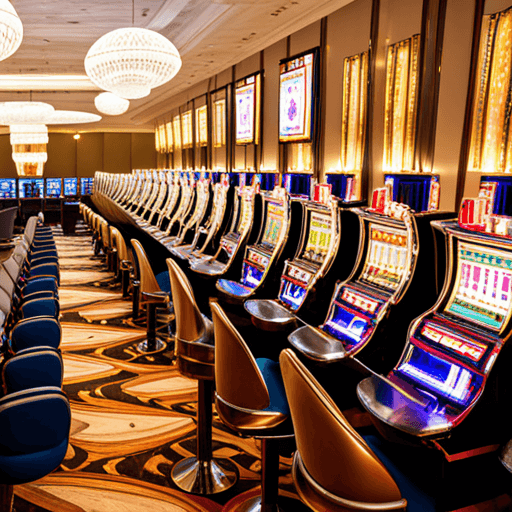
Within a dynamic and exciting world of gaming establishments, where fortune and strategy intertwine, color and design play a critical role in attracting players. As soon as visitors step inside a casino or access a gaming platform, they are enveloped in a sightly feast that grabs their attention and entices them to explore more. Vivid colors, captivating graphics, and innovative layouts are carefully crafted to create an environment of excitement and expectation, ultimately improving the gaming encounter.
As players move through the dynamic landscape of casino games, they encounter a variety of designs that not only serve aesthetic purposes but also influence emotions and choices. Colors like scarlet and gold symbolize wealth and fortune, while soothing navy and emeralds can create a much relaxed environment. Understanding how these elements function together enables casinos to create an inviting and stimulating atmosphere that encourages players to engage with the games, invest additional time at the tables, and boost their overall enjoyment.
The Study of Tint in Gambling Games
Color plays a critical role in the creation of gambling games, shaping players’ emotional states and behaviors. Bright and striking colors, such as scarlet and gold, are often used to incite thrill and attract attention. These shades create a sense immediacy and energy, encouraging participants to participate more eagerly with the activity. By thoughtfully selecting hues, developers aim to inspire emotions of joy and expectation, which can enhance the complete gaming experience.
Distinct hues also have psychological associations that can affect how players perceive their odds of success. For instance, lime is commonly associated with fortune and wealth, making it a frequent choice in activities like the roulette wheel and poker tables. This connection can result players to feel more hopeful and self-assured in their gameplay, ultimately motivating them to bet more. Grasping these associations allows game designers to craft environments that enhance player enjoyment and engagement.
Moreover, the layout of gambling game interfaces often employs gradients and contrasting hues to guide players’ actions. For case, winning outcomes may be emphasized with striking, differing hues, creating a visual cue. This method reinforces positive outcomes and supports repeated gameplay. By utilizing color psychology, gaming venues can create games that not only attract participants but also keep them involved and invested in their play experience.
Creative Elements that Attract Gamers
The visual appeal of casino games is primarily influenced by the implementation of vibrant colors. Lively and contrasting colors are strategically chosen to create an inviting atmosphere that grabs interest. For instance, reds and golden hues often signify luck and wealth, which is why they are common in the color schemes of slot machines and game surfaces. These colors not only attract players in, but they also evoke emotions associated with excitement and anticipation, enhancing the total gaming experience. annullare autoesclusione AAMS
In parallel to color, the aesthetic and organization of gambling games play a crucial role in captivating players. Games are designed to be user-friendly, ensuring that players can quickly understand the guidelines and gameplay. Accessible interfaces, along with engaging graphics and motion, help maintain gamer interest and encourage extended play sessions. The tactile elements, such as the texture of the buttons and the sounds of the games, also add to a holistic sensory experience that keeps players immersed.
In conclusion, conceptual elements in game design can greatly influence gaming decisions. Many gambling games are inspired by popular culture, myths, or exploration motifs, incorporating symbols and characters that resonate with players. These themes create a sense of immersion and connection, making each game feel unique. When players feel a bond to the concept, they are more likely to choose that game over others, leading to higher participation and enthusiasm within the gambling environment.
Case Studies: Successful Casino Table Game Designs
One key example of successful casino game design is the well-known slot machine series themed around popular movies. Games such as those based on the The Wizard of Oz and Game of thrones utilize dynamic colors and top-notch graphics to engage players in recognizable narratives. The employment of lively visuals and captivating sound effects grabs the focus of players, creating an affective connection to the theme. This strategy merely encourages longer play but also enhances the overall gaming experience, resulting in increased player retention.
Another notable case is the use of the psychology of color in table games like 21 and roulette. Casinos often create these games with deep reds and greens, colors traditionally associated with luck and wealth. For instance, the emerald felt on a blackjack table provides a soothing effect, while the red accents in the wheel invite excitement. This thoughtful use of color helps to foster an inviting atmosphere that encourages players to engage, fulfilling their psychological impulses and boosting their enjoyment.
Finally, online casino games that feature social features and bright, lively designs have experienced remarkable success in engaging players. Games like Zynga’s Poker and Slot-O-Mania leverage bright colors and playful animations to create an inviting online environment. The addition of leaderboards, community sharing options, and in-app rewards encourages competition and community, attracting players in for longer sessions. Such designs merely make the games visually attractive but also highlight social connectivity, a key factor in player retention and engagement within online casino environments.